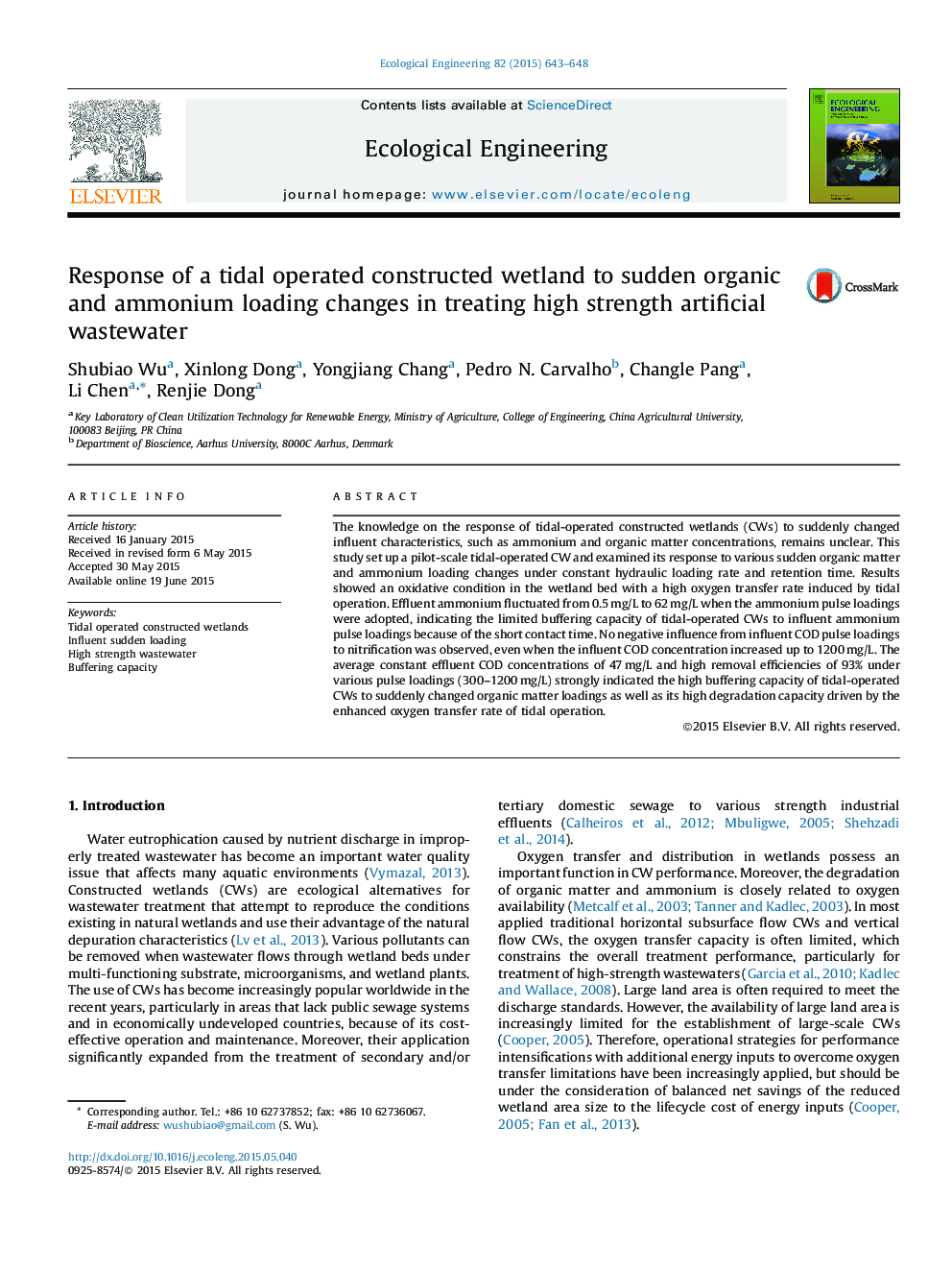| Article ID | Journal | Published Year | Pages | File Type |
|---|---|---|---|---|
| 4389016 | Ecological Engineering | 2015 | 6 Pages |
•Response of tidal wetlands to sudden pulsed NH4 and TOC loadings is investigated.•Limited buffering capacity to ammonium pulse loadings was demonstrated.•No negative influence from high COD pulse loadings to nitrification was observed.•High buffering capacity to suddenly change of organic matter loadings was shown.
The knowledge on the response of tidal-operated constructed wetlands (CWs) to suddenly changed influent characteristics, such as ammonium and organic matter concentrations, remains unclear. This study set up a pilot-scale tidal-operated CW and examined its response to various sudden organic matter and ammonium loading changes under constant hydraulic loading rate and retention time. Results showed an oxidative condition in the wetland bed with a high oxygen transfer rate induced by tidal operation. Effluent ammonium fluctuated from 0.5 mg/L to 62 mg/L when the ammonium pulse loadings were adopted, indicating the limited buffering capacity of tidal-operated CWs to influent ammonium pulse loadings because of the short contact time. No negative influence from influent COD pulse loadings to nitrification was observed, even when the influent COD concentration increased up to 1200 mg/L. The average constant effluent COD concentrations of 47 mg/L and high removal efficiencies of 93% under various pulse loadings (300–1200 mg/L) strongly indicated the high buffering capacity of tidal-operated CWs to suddenly changed organic matter loadings as well as its high degradation capacity driven by the enhanced oxygen transfer rate of tidal operation.
